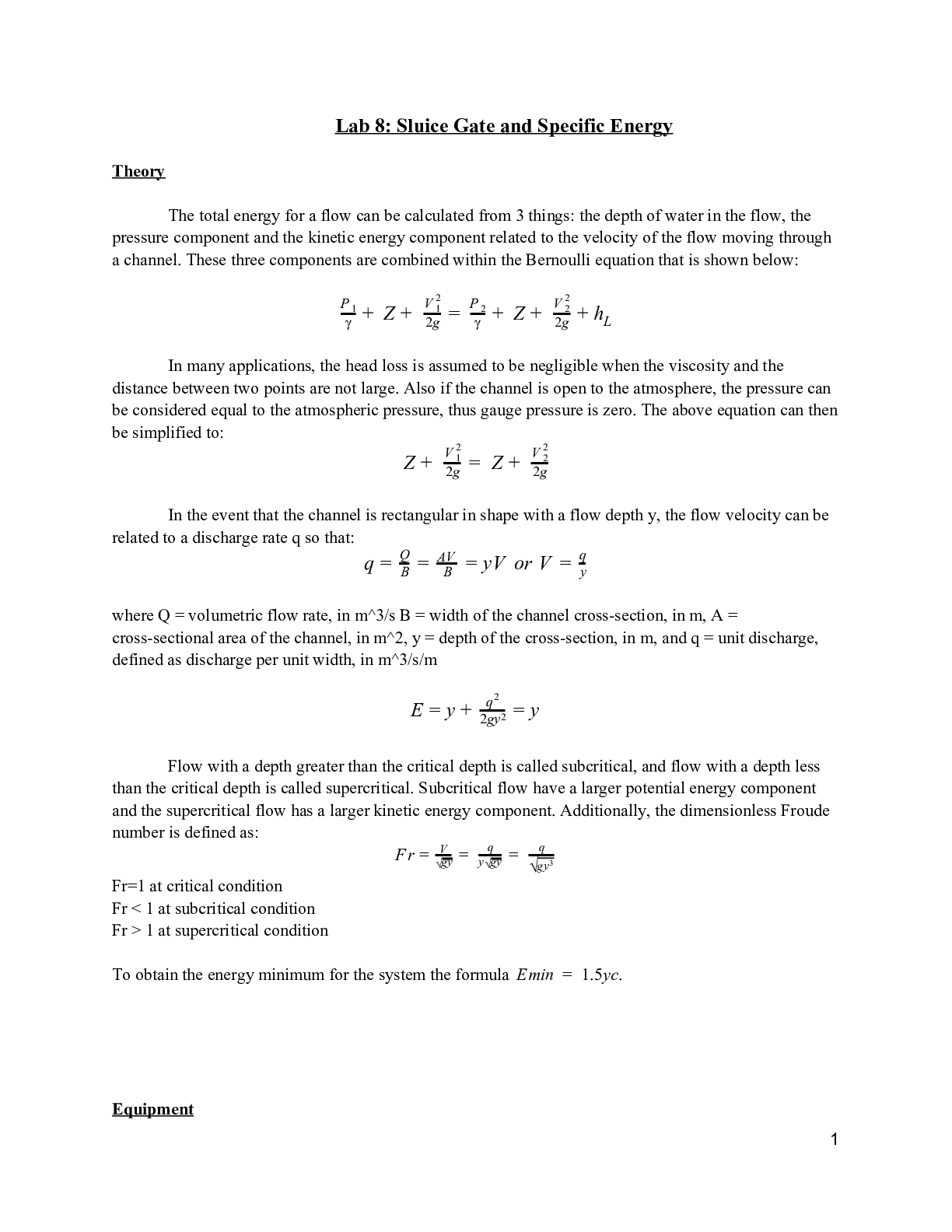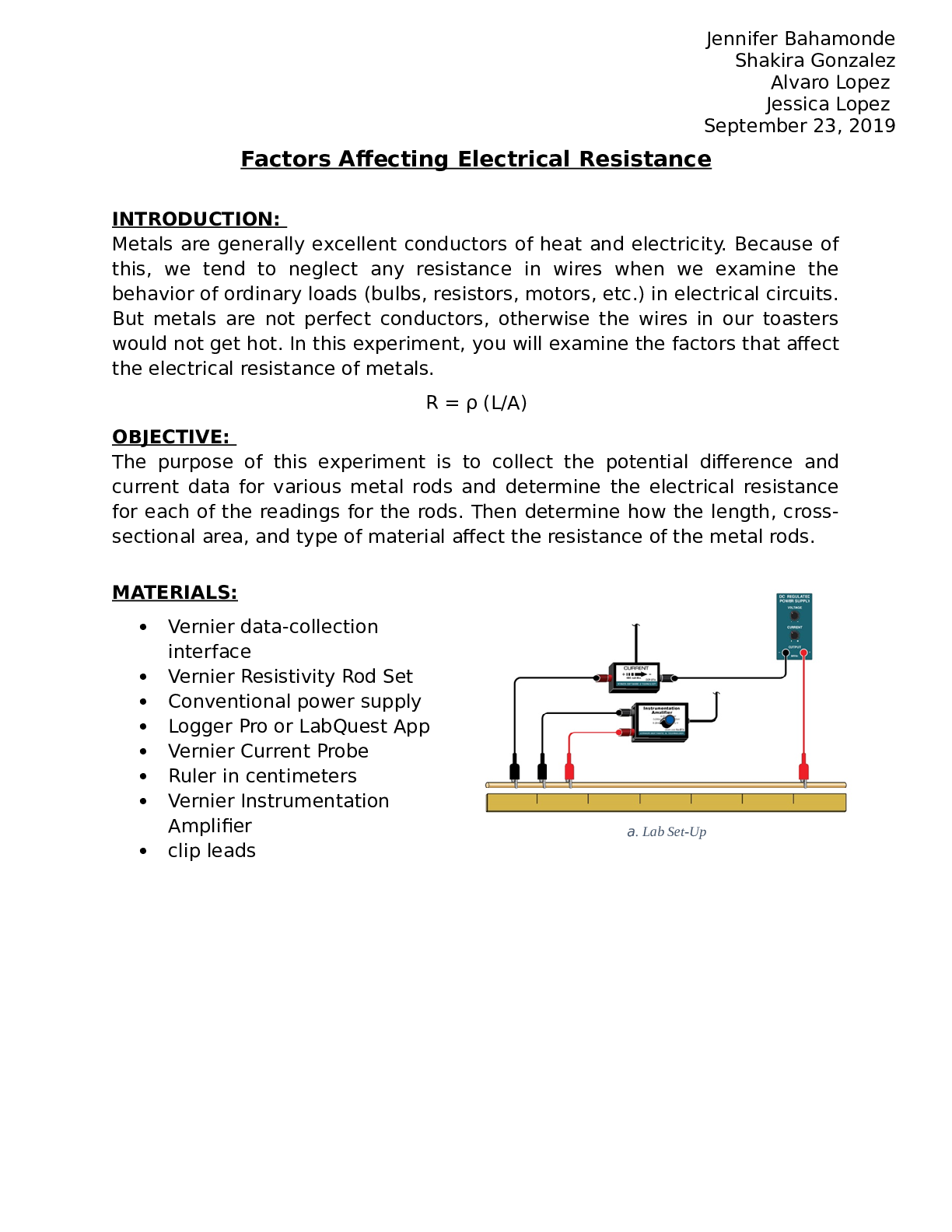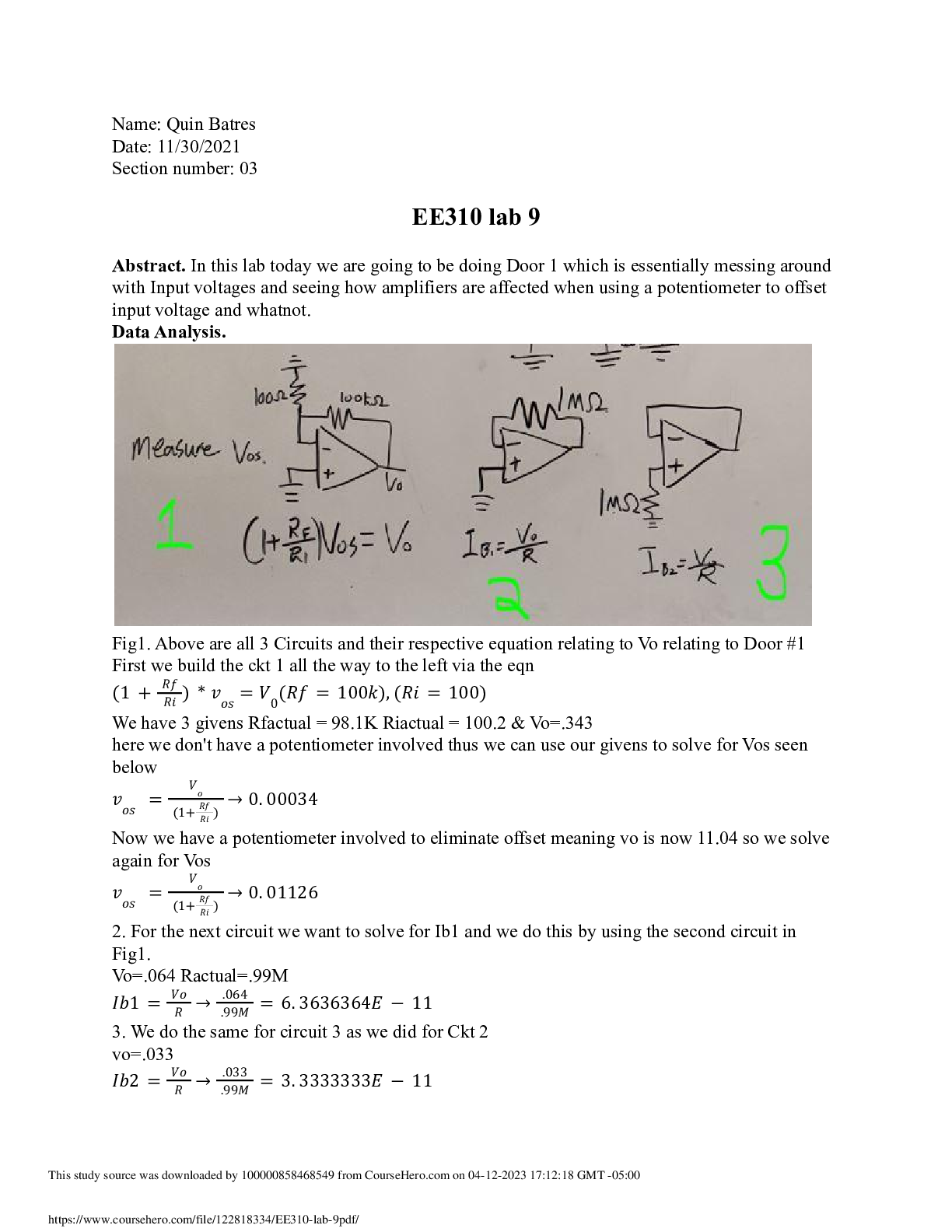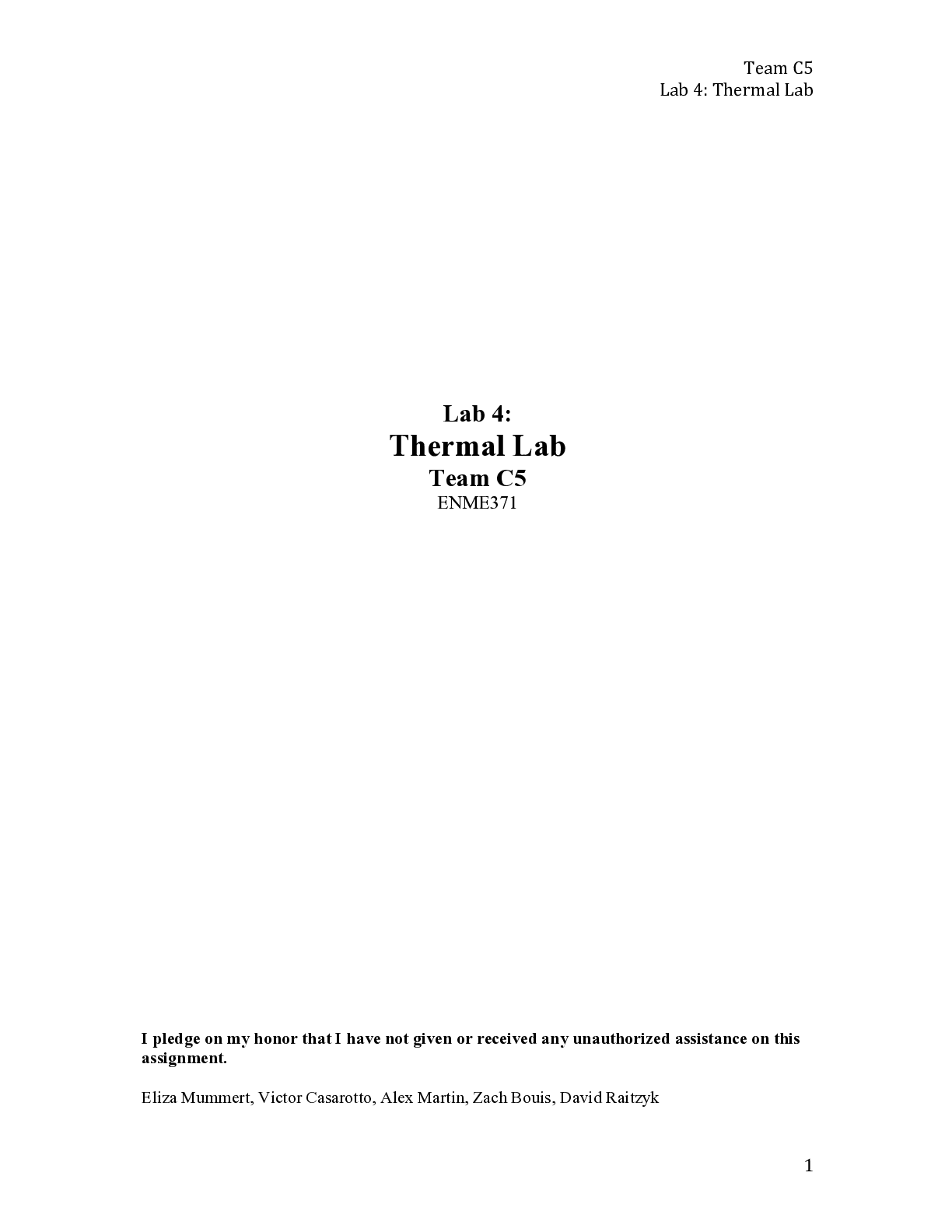Physics > Lab Report > AC1 Generator - PHYSICS LAB REPORT--Lab Final (All)
AC1 Generator - PHYSICS LAB REPORT--Lab Final
Document Content and Description Below
Lab Final - AC1 Generator *Disclaimer: This is an experiment we were given by our lab instructor. It was made to be rather “independent” of her, so our group is not really following a set order ... of directions this time. There is a chance of our plan being completely off, or us missing an important detail. Introduction/Abstract: To complete the setup, we were given a magnet, a spring (with an unknown spring constant), ring mass weights, a wire coil, an oscilloscope, as well as additional items like clamps and poles. The main objective of this experiment was to develop a model that would enable us to forecast the voltage oscillation frequency of a system given the total weight being magnetized to a spring. If there is one, it should be found between mass and oscillation frequency. We experimented with frequencies and masses of 50, 100, 150, 200, and 250 for the two distinct springs. We attached ring weights to the spring and rod that were connected above the wire coil. The weight holder connecting the weights to the spring weighed 50 grams on its own, hence the initial testing of 50 grams was conducted without any weights. Since we had no reliable method of weighing the magnet within the lab since it was quite light, we ignored its weight. We discovered that as more mass was added, the frequency reduced, and the spring constant gradually increased (logarithmically). This implies that the frequency decreases with increasing mass. If we add more mass, the frequency eventually decreases because the mass increases much more quickly than the spring constant. The frequency would still decrease even if the spring constant essentially remained unchanged because of a stronger spring or a less significant change in mass. If we didn't already know the spring constant, we couldn't determine the frequency of that occurrence. Intro: We are studying the relationship between the oscillation frequency and the mass of weights on a spring all inside a voltage coil. The voltage coil is there to ensure a constant frequency. We have frequency: This equation has the spring constant, the mass, and the frequency as variables. If you look at the format, if we keep k constant, when m increases, that value in the square root becomes smaller, making the result smaller. Our team then hypothesized that as the mass gets bigger, the oscillation frequency will get smaller. They are inversely related. It makes sense because there is the same force in the spring pushing and pulling, but the amount getting pushed or pulled increases. [Show More]
Last updated: 2 years ago
Preview 1 out of 5 pages

Buy this document to get the full access instantly
Instant Download Access after purchase
Buy NowInstant download
We Accept:

Reviews( 0 )
$8.50
Can't find what you want? Try our AI powered Search
Document information
Connected school, study & course
About the document
Uploaded On
Apr 28, 2023
Number of pages
5
Written in
Additional information
This document has been written for:
Uploaded
Apr 28, 2023
Downloads
0
Views
147













